About TTX

About TTX
TTX’s railcar fleet is concentrated in three key car types: flatcars, boxcars and gondolas. The fleet contains over 36,000 boxcars and gondolas but flatcars and intermodal wells are by far the largest part of the TTX fleet – just over 140,000 of them.
Ongoing communication with the industry and member railroads ensures TTX assets are set to handle market growth and evolution. Idle assets are re-purposed, fleet utilization is continuously modeled and forecasted, and capital plans are executed for modifications and acquisitions to serve an ever changing market.
Since 2000, TTX has invested over $13 billion in new railcar purchases. With our extensive fleet of railcars, we’re making it even easier for railroad customers to experience or expand their use of freight rail equipment.
Types of Railcars
MOVING THE HIGHWAY BY RAIL ®
Intermodal Flatcars
Intermodal traffic (shipping containers or trailers on railcars) has increased five-fold since 1980, with over 16.5 million shipments per year routing throughout North America. Intermodal containers and trailers carry a wide range of consumer goods (such as clothing, appliances, housewares, electronics, etc.), and industrial and agricultural products. TTX equipment supports both container and trailer shipments through car types specially designed to maximize efficiency for domestic and international markets.
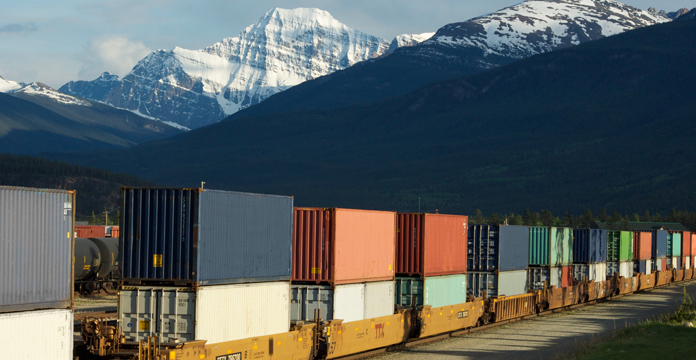
Double-Stack Intermodal Railcars
The DTTX-marked double-stack railcar design enables railroads to carry two intermodal containers stacked on top of each other. Many TTX double-stacks are articulated (sharing wheels between the car’s units), which reduces slack action and improves the ride quality for fragile cargo. Intermodal double-stack wells come in different configurations. The most common are 5-unit, 40-foot articulated railcars for carrying 20-foot, 40-foot, and 45-foot international containers, and 3-unit, 53-foot articulated railcars for transporting 53-foot containers. TTX is a major supplier of intermodal double-stack wells to the industry with a fleet of over 127,000 wells of capacity.

Conventional Intermodal Railcars
TTX’s conventional intermodal fleet (non-double-stack intermodal railcars) is used mainly to transport highway truck-trailers, or in some cases, intermodal containers over routes that lack double-stack clearances. Our standard intermodal fleet consists mostly of 5-unit, 53-foot, articulated spine cars, the design permits handling of most trailer sizes, including 28-foot “Pup” trailers through 53-foot trailers and most container sizes. TTX also provides 89-foot, solid deck intermodal flats. FRONT RUNNER ℠
Automotive Flatcars
Shipping automobiles by rail saves money and offers protection to the vehicle. With automotive shipments being such a major part of general rail traffic, TTX has developed a deep and flexible roster of auto-supporting railcars. TTX’s pool of automotive railcars includes multi-levels, uni-levels and frame flats.
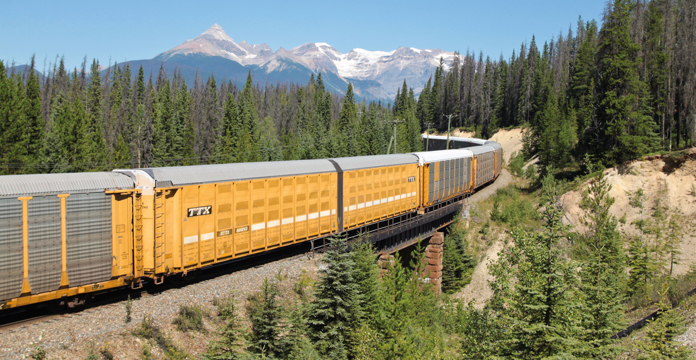
Multi-Levels
Most of TTX’s automotive flatcars are either bi-levels initialed TTGX for carrying larger vehicles such as SUV’s and light trucks, tri-levels initialed ETTX for handling smaller passenger cars, or CTTX marks incorporating a convertible deck design. The cars are fully enclosed with end doors to protect the cargo. Typically, the railroads own the rack structure and TTX provides the underlying flatcar. TTX’s pool also includes BTTX-marked articulated bi-levels where TTX owns the flatcar and the rack.
Uni-Levels
The uni-level is a single level, fully enclosed 82-foot railcar intended to carry large vehicles and heavy equipment. This unique railcar is designed to ensure products like RV’s, Class 8 truck tractors, buses, fire trucks, and other similar vehicles arrive in factory fresh condition at dealers’ show rooms. Special features of the TTX railcars include the tri-fold end doors, creating a 10-foot wide opening for loading, and wheel harnesses, straps, and chocks used to secure loads while in transit.
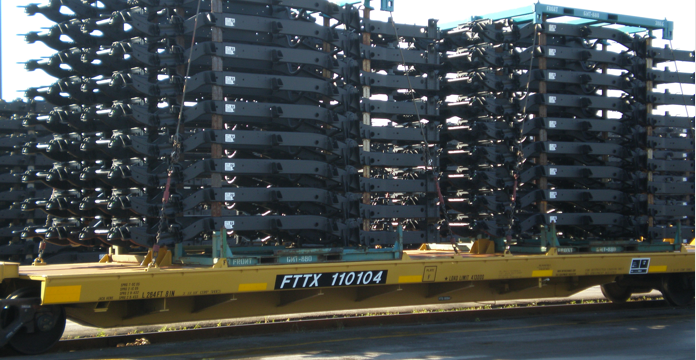
Frame Flats
TTX supplies the industry with 89-foot flats used to transport auto and light truck frames from auto part manufacturing facilities to assembly plants. Special racks, owned by the auto manufacturers, are fitted on the cars and used to secure the loads.
General Merchandise Flatcars
TTX maintains an inventory of specialized equipment to meet the growing demands of railroad customers. This includes centerbeams, bulkhead flats, chain tie-downs, heavy-duty flat cars, and other specialized flatcars.
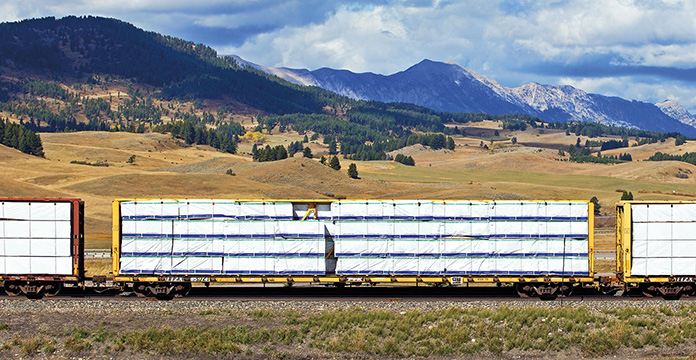
Centerbeam Flatcars
The unique design of the centerbeam is suited to the transportation of building products such as dimensional lumber, plywood, OSB, and wallboard. The downturn in the housing market significantly reduced demand for these commodities, and shippers creatively found other uses for the car such as shipments of pipe, steel tubes and girders. Most cars are 73-foot and 100-ton capacity.

Bulkhead Flatcars
TTX’s standard 68-foot bulkhead (62-foot between bulkheads) with 100-ton capacity is a simple and utilitarian design. With either wood or nailable steel floor and 11-foot high bulkheads that prevent load shifts, the car type handles a wide variety of commodities, including dimensional lumber, steel plate, pipe, beams, bars and even coils (some of TTX’s cars are equipped with special racks for coils and ingots). Additionally, the cars transport all sorts of heavy machinery.
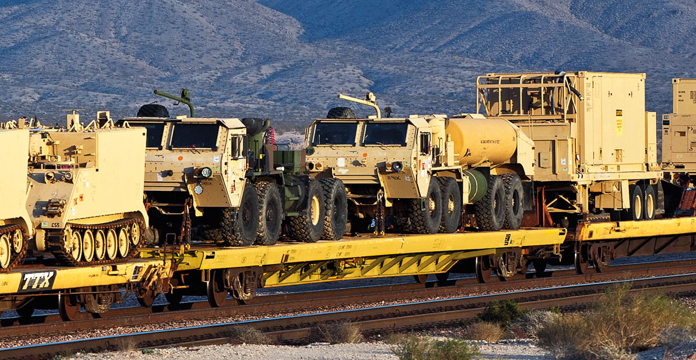
Chain Tie-Down Flatcars
TTX owns a fleet of 60-foot and 89-foot chain tie-down cars used by shippers to carry large, bulky items such as farm implements, construction equipment, heavy machinery, vehicles of all types, and military traffic. The configurations of the cars vary, but all are equipped with either 1/2-inch or 3/8-inch chains, and use wood or steel decks, with capacity ranging between 140,000 – 170,000 lbs.

Heavy-Duty Flatcars
TTX owns a large array of heavy-duty flat-deck and depressed-deck cars, all specifically designed for extra-heavy shipments, and in the case of the depressed cars, designed to provide additional clearance for oversize loads. In fact, TTX provides nearly 20 different types of heavy-duty cars, with capacity ranging from 100 to 370 tons. Created for the transportation of heavy machinery, shipments tend to concentrate in power generating equipment, such as boilers, turbines (including wind energy hubs and nacelles), electrical transformers, pressure vessels, and shipments that frequently require special handling and train operations.

General Purpose 89-Foot Flatcars
TTX owns numerous 89-foot, 70- or 100-ton, general purpose flatcars. Their simple design belies their capability to carry numerous types of cargos, particularly large, bulky, and heavy items, including pipe and other primary steel products. To facilitate shipments, many of the 100-ton cars are equipped with a system of floor deck holes, which permit the easy installation of risers, bunks, and other attachment devices used to secure loads. Additionally, several thousand cars are specially equipped to handle pipe with risers, stake pockets and web strap winches.
Ultimately, the 89-foot car’s functionality is greatly enhanced by the wide assortment of securement devices. Moreover, these components are flexible and easy to modify, enabling TTX to customize cars to meet shipper requirements and market conditions.
Boxcars
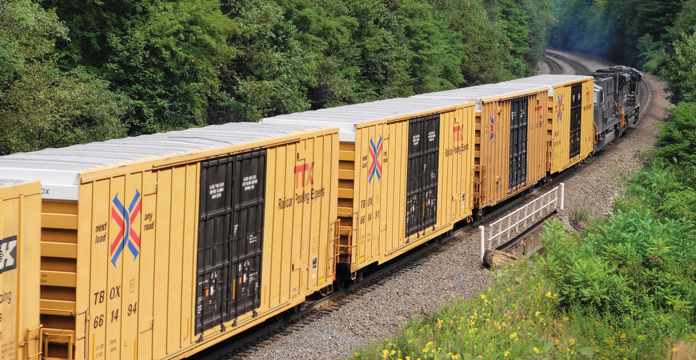
Boxcars are multi-purpose railcars useful for carrying anything that requires protection from the weather, such as paper, food products, and manufactured goods. TTX’s boxcar fleet consists of three boxcar types: an older 50-foot, Plate-C, standard-capacity 70-ton boxcar, and two new, Plate-F, high-capacity 100-ton boxcars in 50-foot and 60-foot versions.
The larger Plate-F, high-capacity boxcars come in two versions: a 50-foot high-cube boxcar for paper loading, initialed FBOX, and a 60-foot high-cube initialed TBOX with double-doors and a 16-foot wide door opening for lumber, canned goods, beer, wine, steel, and other manufactured and consumer products, such as appliances.
Many of the 50-foot Plate-C cars are equipped with a 10-foot sliding door initialed RBOX, with about 10% initialed ABOX and equipped with a 6-foot plug door in addition to the 10-foot sliding door, facilitating the loading of lumber, containerboard and food products, the predominant commodities loaded in this car.
Gondolas
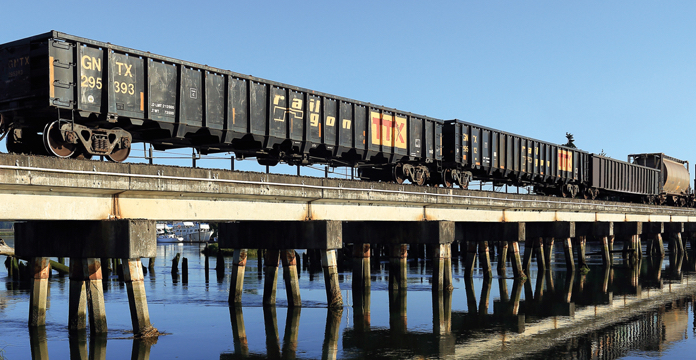
Gondolas round out the TTX fleet, and are ideal for carrying loose, bulk items that do not need protection from the elements, such as scrap metal, aggregates, or primary steel products.
TTX Company’s fleet consists of an older generation 52-foot 100-ton car marked GONX, ideal for handling scrap metal products, bars and rods, or aggregates.
The newer 66-foot 100-ton car marked GNTX is equally efficient at handling scrap commodities but increases flexibility with the added capability to handle finished products such as drilling pipe, metal plate and railway track.
